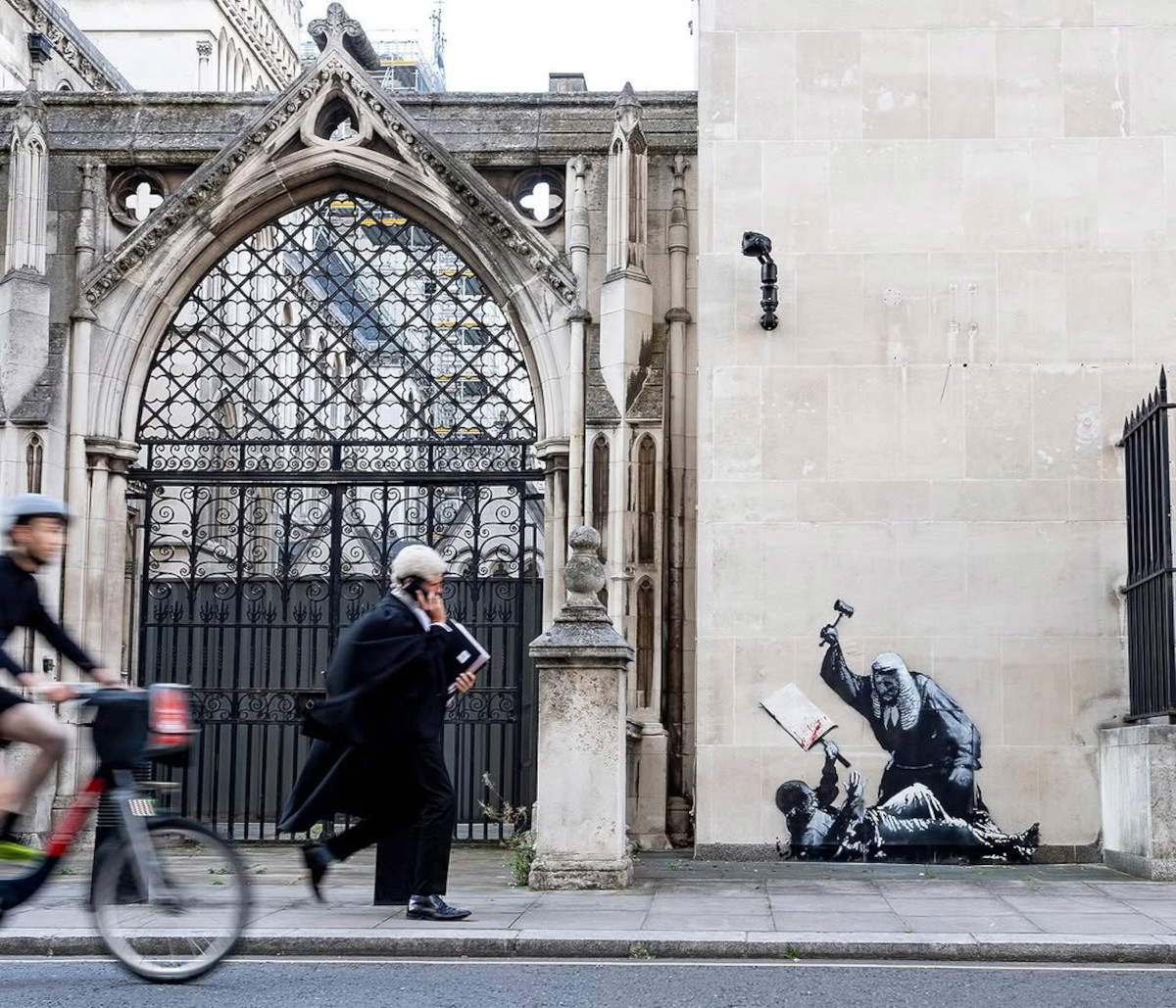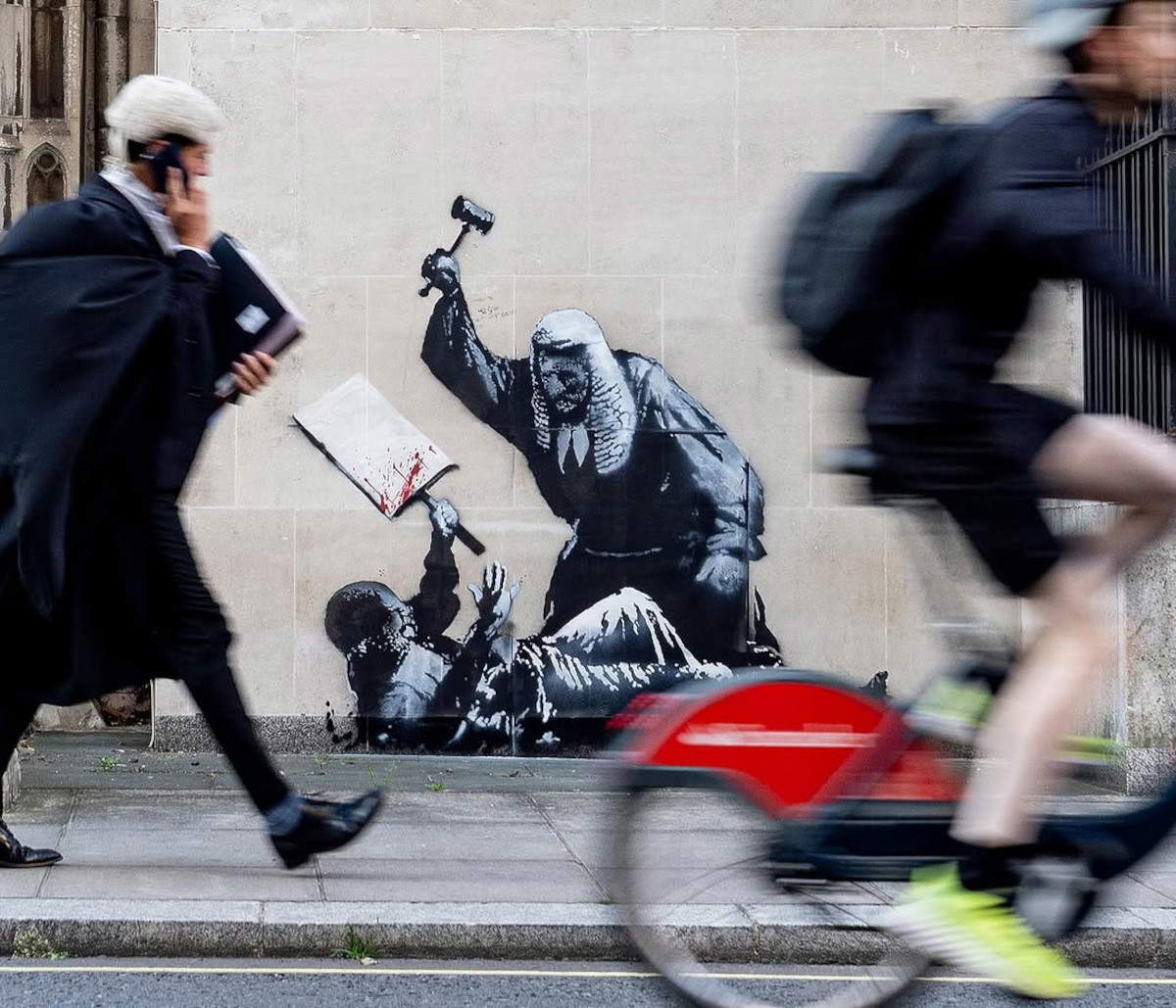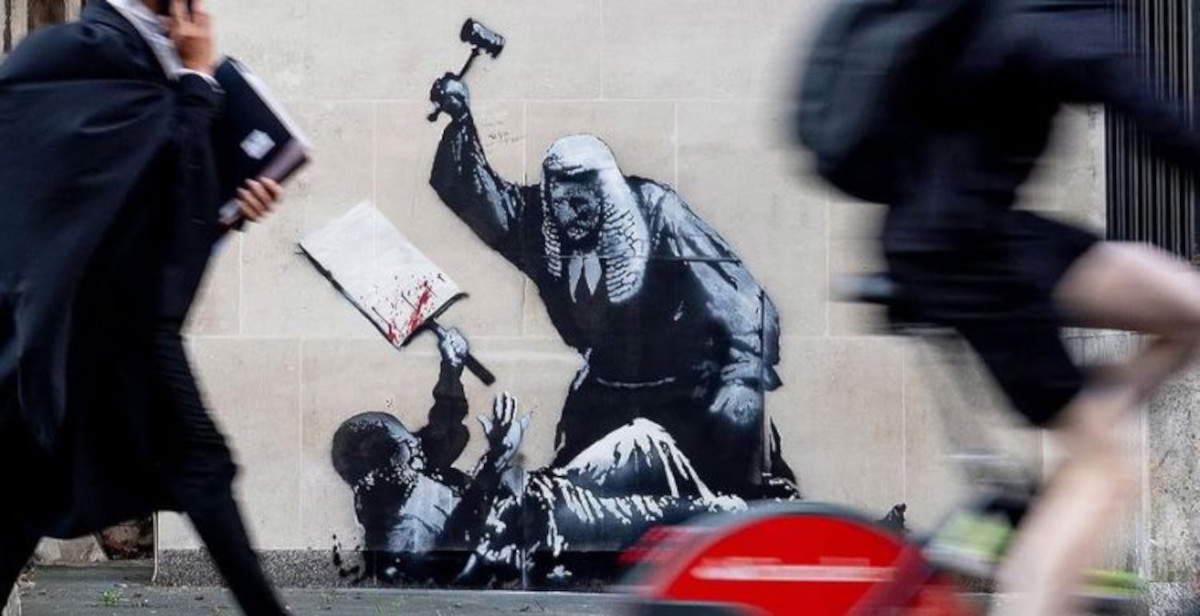Banksy ’s new intervention on the streets of London has not been long-lived (we covered it here). On the facade of the Queen’s Building, part of the Royal Courts of Justice complex, a mural has appeared in recent days depicting a judge in a wig and robe in the act of striking a protester lying on the ground. The man holds a blood-soaked sign, a symbol of protest violently suffocated. The work, claimed by the artist himself through an Instagram post titled “Royal Courts of Justice. London,” was immediately obscured by black plastic sheeting and protected by metal barriers, pending final removal.

According to reports in the Open newspaper, the decision was made by the relevant authorities with the aim of preserving the original character of the historic building. As written by the magazine, a spokesperson for HM Courts and Tribunals explained in fact that the Royal Courts of Justice, being a protected property, cannot accommodate interventions that would alter its architectural appearance. Therefore, the mural, despite its recognizable signature and international resonance, will not have long life. In fact, the mural’s appearance comes just days after a large police operation led to the arrest of nearly 900 people.
Those detained had taken part in demonstrations against the banning of Palestine Action, an organization declared a terrorist organization by then Interior Minister Yvette Cooper. The crackdown on the protests reignited the public debate on freedom of expression and the limits of political contestation. The theme of justice and repressive power thus found a visual transposition in Banksy’s chosen image: a judge, an emblematic figure of the institution, who turns the law into an instrument of physical violence. A representation that immediately attracted the attention of passers-by and also of those who monitor the actions of the artist, known for his urban incursions capable of combining social denunciation and aesthetic provocation.

The work, placed on a building highly symbolic for British justice, has also raised questions about Banksy’s own anonymity. The speed with which it was spotted, documented and claimed has fueled speculation about the identity of the artist, who has always hidden behind a pseudonym that has helped solidify his myth. As reported by Open, the context in which the work is set is made even more complex by the statements of Lady Chief Justice, who a few weeks ago denounced a rise in sensationalist and inaccurate abuse of judges. Against this backdrop, the image of a magistrate assaulting a protester takes on added polemical significance as it underscores the growing tension between judicial institutions and public opinion. Banksy’s violent judge, though destined to disappear from the walls of London, has thus imprinted his image on the global circuit of information and social reaction.
 |
| Banksy, violent judge mural in London will be removed from Queen's Building |
Warning: the translation into English of the original Italian article was created using automatic tools. We undertake to review all articles, but we do not guarantee the total absence of inaccuracies in the translation due to the program. You can find the original by clicking on the ITA button. If you find any mistake,please contact us.